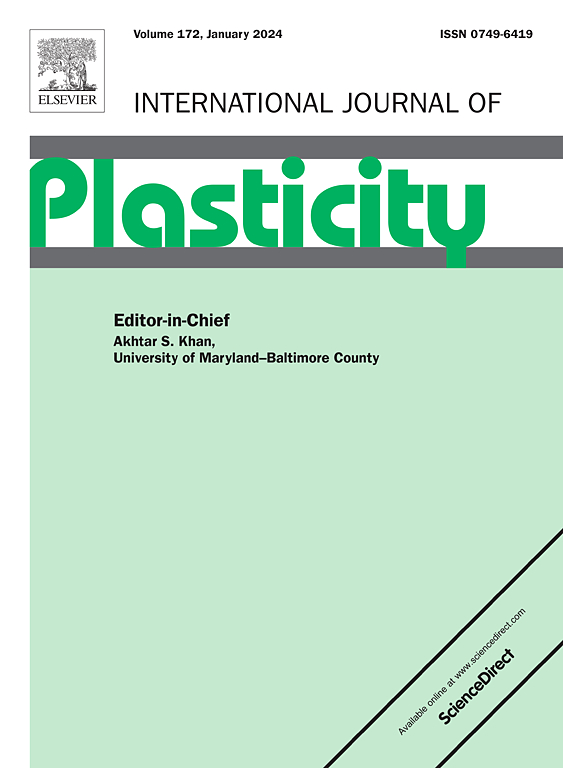控制含间隙溶质的钛合金的界面结构可提供超高的强度和延展性
IF 9.4
1区 材料科学
Q1 ENGINEERING, MECHANICAL
引用次数: 0
摘要
设计界面结构特征是调整多晶α-析出物的关键。而传统的三模态结构,由于界面多样,由于α-软相较多,塑性大,屈服强度低。本工作的重点是操纵多个界面结构,赋予新设计的三模态Ti-4.9 al -4.4 cr -2.45 mo -1.6 zr合金在间隙溶质的辅助下具有优于传统高强度钛合金的强度-塑性协同作用。本文采用间隙溶质合金化策略,不仅可以形成坚硬且可变形的α-析出相,还可以实现可控制的逐步α-析出序列,从而控制界面结构,从而改变Ti合金中的滑移传递模式。特别是,位错-间隙原子相互作用形成的次生α-纳米片间的相干孪晶界(CTBs)可以有效地阻碍位错运动,但促进位错在软相变β-基体中的传递。这一策略为设计具有成本效益和轻量化应用的高性能间质耐溶质合金提供了新的见解。本文章由计算机程序翻译,如有差异,请以英文原文为准。


Manipulating the interfacial structures in titanium alloys containing interstitial solutes delivers ultra-high strength and ductility
Design structural characteristics of interfaces is the key for ultra-strong titanium (Ti) alloys by tuning polymorphic α-precipitates. However, the conventional tri-modal structure, characterized by various interfaces, usually shows large ductility but low yield strength caused by numerous soft α-precipitates. This work focuses on manipulating multiple interfacial structures to endow a newly designed tri-modal Ti-4.9Al-4.4Cr-2.45Mo-1.6Zr alloys with the superior strength-ductility synergy assisted by interstitial solutes, beyond conventional high-strength Ti alloys. Here, an interstitial solute alloying strategy is utilized not only to form hard-yet-deformable α-precipitates, but also to achieve the controllably stepwise α-precipitation sequence to manipulate interfacial structures and thus slip transmission modes in Ti alloys. In particular, the coherent twin boundaries (CTBs) between secondary α-nanolamellae formed via dislocation-interstitial atom interactions can efficiently hinder dislocation motion but promote dislocation transmission in the soft transformed β-matrix. This strategy provides new insights into designing high-performance interstitial solute-tolerant alloys for cost-effective and lightweight applications.
求助全文
通过发布文献求助,成功后即可免费获取论文全文。
去求助
来源期刊

International Journal of Plasticity
工程技术-材料科学:综合
CiteScore
15.30
自引率
26.50%
发文量
256
审稿时长
46 days
期刊介绍:
International Journal of Plasticity aims to present original research encompassing all facets of plastic deformation, damage, and fracture behavior in both isotropic and anisotropic solids. This includes exploring the thermodynamics of plasticity and fracture, continuum theory, and macroscopic as well as microscopic phenomena.
Topics of interest span the plastic behavior of single crystals and polycrystalline metals, ceramics, rocks, soils, composites, nanocrystalline and microelectronics materials, shape memory alloys, ferroelectric ceramics, thin films, and polymers. Additionally, the journal covers plasticity aspects of failure and fracture mechanics. Contributions involving significant experimental, numerical, or theoretical advancements that enhance the understanding of the plastic behavior of solids are particularly valued. Papers addressing the modeling of finite nonlinear elastic deformation, bearing similarities to the modeling of plastic deformation, are also welcomed.
 求助内容:
求助内容: 应助结果提醒方式:
应助结果提醒方式:


